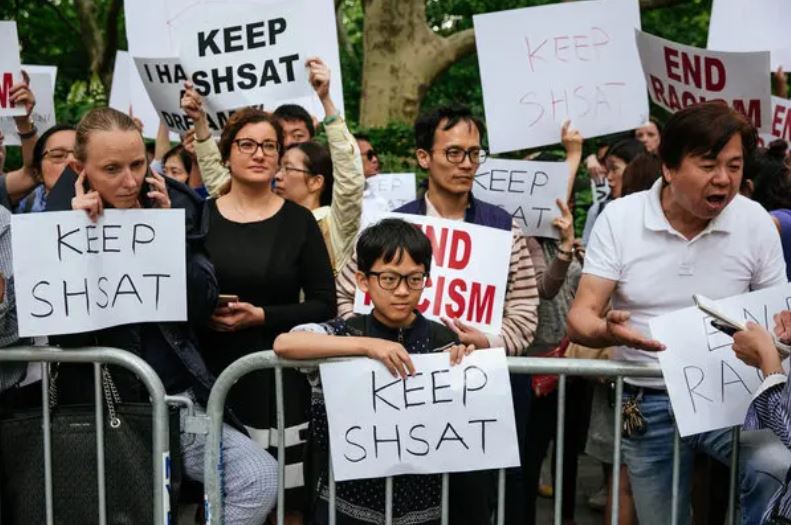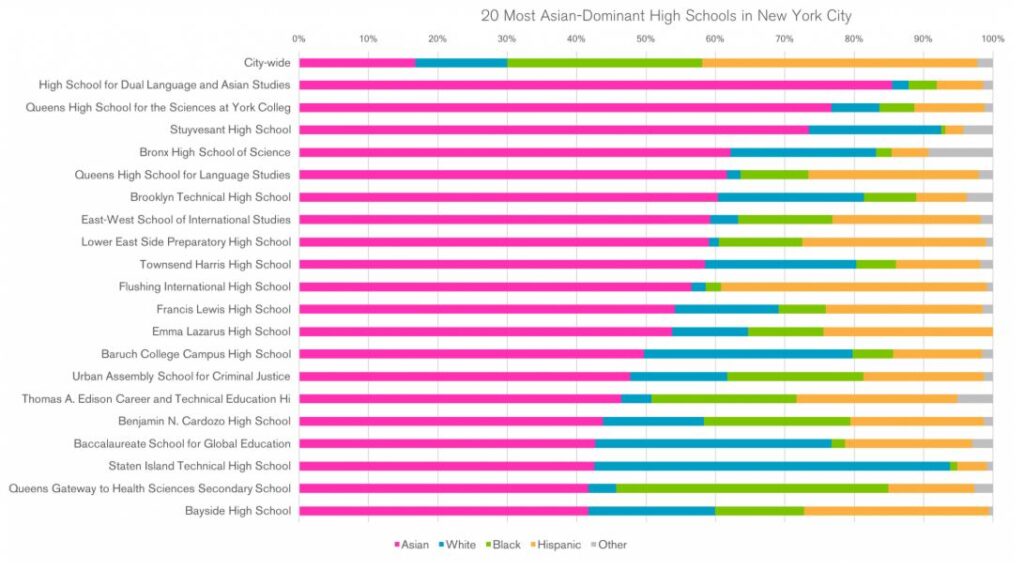We Must Make the High School Admissions Process More Holistic
By Brian Yang

To get into Brooklyn Technical High School (B.T.H.S), one must receive a S.H.S.A.T score between 484 and 560. The test is the only admissions factor to receive entrance into the eight New York City Specialized high schools and shapes the proceeding four years of a student’s life. I always wondered where I would be right now if I didn’t pass the cut-off by a point. How different would my life be? Would I still have a huge network of brilliant professors and friends?
On my first day of high school, I’ve noticed that at least ninety percent of my classmates were either Asian or White and the remaining were Latinx or Black. Based on the 2019 Specialized High School Admissions racial statistics, “Black and Latinx students comprise almost 70 percent of New York City public schools, but only makes up just 10 percent of those admitted to the eight specialized high schools.” We must acknowledge this racial inequality within the specialized high schools because it’s rooted within the entire public school system.

20 most Asian-dominant high schools in New York City. Originally featured in “How Race Plays a Major Role in NYC High School Admissions Game” (Dyske, 2017)
As a person of color with a disability, I was enrolled in an enrichment program and was grateful enough to meet other people of color with disabilities. The racial make-up of the class was the complete inverse of my daily classes. As I had conversations with my peers, I discovered many similar hardships we had endured and many questions we had yet to ask. Many students brought up their low-income background and how they weren’t able to attend test-prep. High school admissions should not be based on one’s affordability of test prep, which usually advantages White and Asian students due to their economic status. We questioned why we received a low score on the S.H.S.A.T when we did well academically in middle school: Why was there such a discrepancy about the knowledge of the S.H.S.A.T, and the high school admissions process. Our excellence and accomplishments in middle school didn’t matter at all, because this one exam overrode everything we had earned. Why is the exam so heavily weighted in the admissions process? I also discovered that many of the students barely passed the cut-off or had to attend the Discovery program for admissions. The Discovery program places a limited amount of students from disadvantaged backgrounds at the city’s eight specialized high schools to increase the diversity of these schools. By the end of our discussion, my peers and I agreed that our race, disability, and economic status were the barriers that stopped us from being as prepared for the test as we could have been.

Despite data proving that only a few Black and Hispanic students are getting selected each year, the education system has not tried any alternative methods to yield a stronger and more diverse group of students. The exam “already tells us something we already know: Kids who do well on the S.H.S.A.T do well in High school”. What is the link between S.H.S.A.T scores and a student’s success? The only linkage I see between the S.H.S.A.T and a student is how a student’s family income usually corresponds to the student’s score. Parents who can speak English, are more educated, and have more money can attend workshops and buy test prep/books to maximize their children’s S.H.S.A.T scores. Within The Test Doesn’t Tell you as Much as You Might Think, Educational Columnist, Jon Taylor, gives insight into his years of studying the link between S.H.S.A.T and students success. Taylor mentions that “the vast majority of students who were admitted with lower S.H.S.A.T scores, from 486 to 600, freshman grade point averages ranged widely — from around 50 to 100”. Although the S.H.S.A.T does predict accurately for students who score above 600, the test overlooks the students who scored near the cutoffs. The exam may potentially deter great opportunities for talented student and undermine the influence a High School environment can have for a student. If we look into course grades, which are not factored in H.S. admissions, we see that “course grades earned in the seventh grade predicted 44 percent of the variability in freshman year grades,” providing a more accurate linkage towards a student’s success rate.
The DOE must make sure that all people have equitable resources and opportunities, and consider the economic conditions of families. We must look into teacher recommendations and middle school GPA. Teacher recommendations can give insight into the student’s personality, motivation, and goals. Having a holistic process allows H.S. to learn more about the student as a human being, rather than through a test score. A middle school GPA should also be considered because it displays the student’s 3-4 year academic progress, motivation, and consistency whereas the SHSAT is a one-day exam that only gives insight on how well of a test taker a student is. The middle-school education system should provide free SHSAT study sessions and test books to low-income students; therefore, everyone can be equally aware of the test and is not penalized for their economic circumstances. If we only rely on one exam, then we miss out on the importance of long-term motivation and life skills that the exam fails to capture.
Brian Yang is a junior at Columbia University School of Engineering, studying Computer Science. He grew in Brooklyn, New York City, and is also an alumnus of Brooklyn Technical High School Class of 2016.